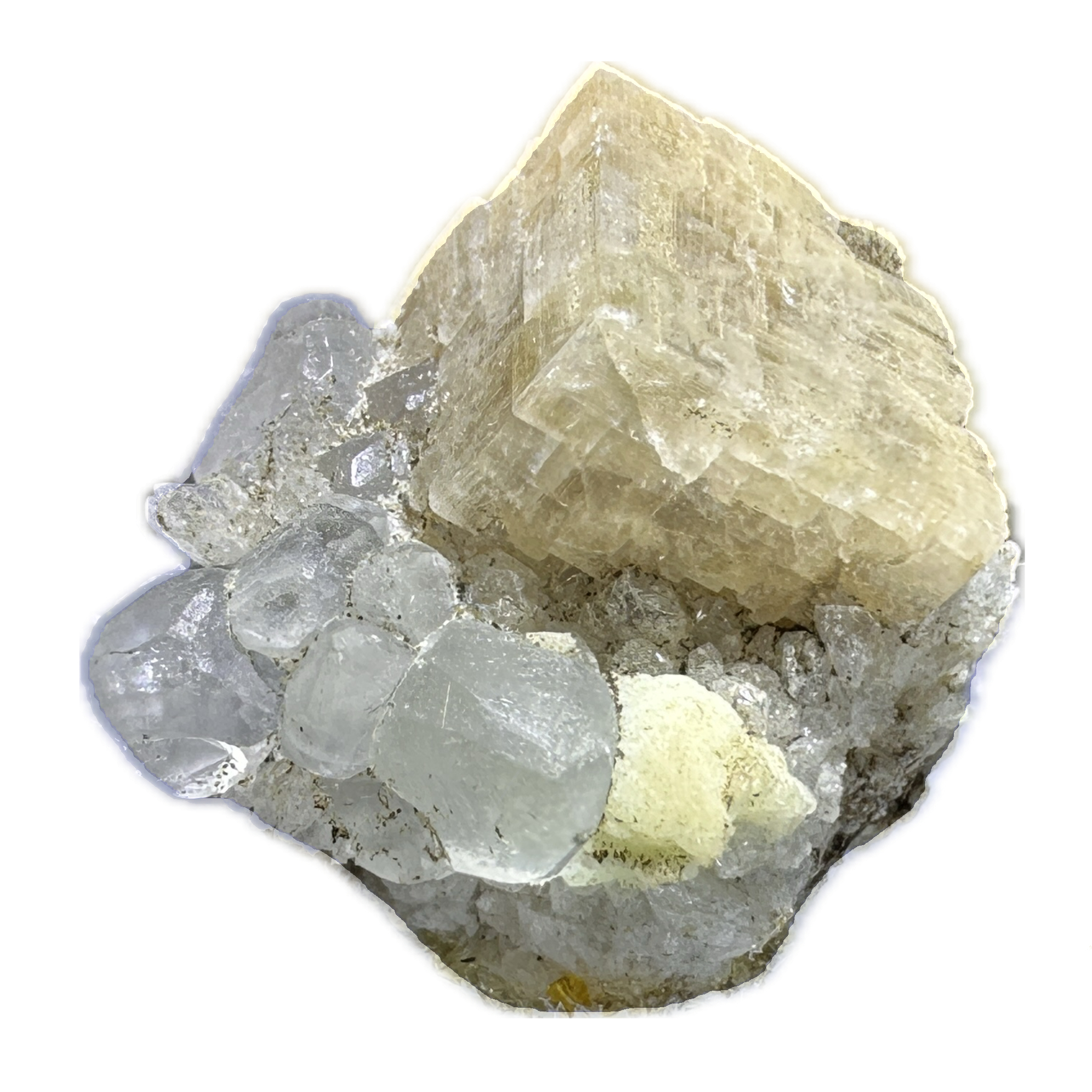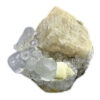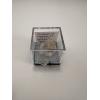Chabazite thumbnail mineral, New Jersey.
Chabazite is a zeolite mineral that belongs to the tectosilicate group. It is characterized by its intricate crystal structure and is often found in a variety of colors, including white, colorless, pink, orange, and yellow. Chabazite is part of a group of minerals known for their ability to trap water molecules within their crystal framework.
Thumbnail specimens of chabazite are small, delicately formed samples that serve as collectible representations of this mineral’s unique characteristics. Measuring just a few centimeters in size, these specimens are prized by mineral collectors for their aesthetic appeal and the intricacy of the crystal formations they display. Chabazite crystals often form in well-defined rhombohedral shapes, creating visually stunning patterns.
These miniature chabazite specimens are commonly found in basaltic rocks, volcanic tuffs, and other igneous formations. They are often associated with other zeolite minerals such as heulandite, stilbite, and apophyllite. Chabazite’s ability to absorb and release water molecules makes it a valuable mineral in various industrial applications, including water purification and catalysis.
Collectors appreciate chabazite thumbnails not only for their beauty but also for the insight they provide into the geological processes that led to their formation. The delicate nature of these specimens emphasizes the intricate details of chabazite crystals, making them highly desirable additions to mineral collections. It’s worth noting that handling these specimens with care is essential to preserve their intricate structures and prevent damage.










